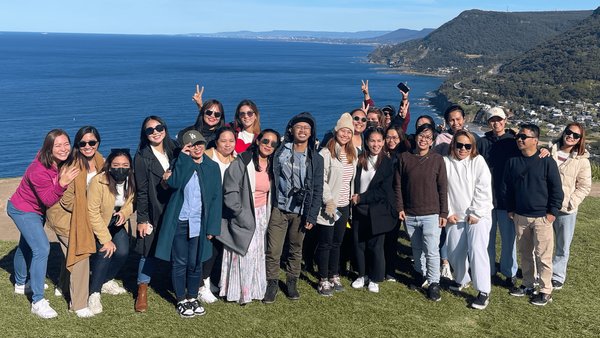
Recruiting, Migrating, and Supporting International Aged Care Workers & Nurses to Australia
Aged-care faces ageing boom, staff shortage, strict care rules. Our 7-point checklist turns global nurse recruitment—esp. Filipino carers—from hassle into a strategic lifeline.




A 7-point Checklist for Aged Care Providers to successfully transform international recruitment from a challenge into a competitive advantage.
With an ageing population and a dwindling local healthcare workforce, aged care providers in Australia are facing an existential crisis. The country is on the cusp of a demographic tidal wave.
The question confronting decision makers in top-level management and C-suite executives of aged care facilities across the country is no longer whether international recruitment is viable—it’s whether they can survive without it.
International recruitment of aged care professionals, particularly nurses and personal care workers, should no longer be seen as a last resort. For many healthcare providers, it has become the cornerstone of their sustainable workforce strategy. And yet, despite this increasing awareness of the problem, most of the sector still struggles to tap into international human resources efficiently.
Australia has lagged behind countries like Canada, the UK, and Germany in deploying international healthcare talent. This delay has stemmed from a combination of complex migration laws, fragmented recruitment systems, and a lack of integrated support mechanisms.
But change is finally underway. The introduction of the Aged Care Industry Labour Agreement (ACILA) has paved the way for a more structured, long-term approach to bringing international workers into the sector. For small and medium-sized aged care providers, this critical moment represents a unique opportunity to future-proof their workforce.
The Strategic Case for International Recruitment
International aged care recruitment is not merely a matter of plugging workforce gaps or filling rosters. Done right, it delivers benefits across three dimensions: economic efficiency, care quality, and community development.
Economic Efficiency
Aged care providers that embrace international recruitment often see a return on investment within 3 to 7 months.
Our data at Groworx reveals that over 95% of deployed international workers stay in their roles for over five years. Compared to the churn and burn of local staffing models, this is transformative and a major encouragement to shift to international recruitment.
Agency spend can also be reduced by 85% within weeks, retention rates for international workers also reached as high as 99% in Australia, and training and people management overheads dropped by 30%. Additionally, existing staff benefit from reduced leave liability and fewer injuries, which further contributes to overall organisational efficiency in many residential aged care facilities.
Care Quality & Workforce Culture
International workers, particularly those who see caregiving as a long-term vocation, bring dedication and consistency that is hard to match.
Filipino workers who have been deployed by Groworx in rural and regional communities have shown this high level of commitment by staying no less than 5 years in their communities, with the majority planning to bring their family members and build their lives in Australia forthe long term. Retention rates have skyrocketed to as high as 99% in aged care facilities since the deployment of Filipino nurses and care workers.
“Care work is not just an optional job for many Filipinos,” says Dan Sandiford, Co-founder and CEO of Groworx. “It’s a dream. They’re driven by purpose.”
“Most importantly, with the introduction of international workers, we’ve found that staff morale is lifted across facilities with the influx of committed carers who contribute meaningfully to team cohesion and client satisfaction.”
Community and Regional Growth
Contrary to old myths, rural Australia has warmly welcomed international care workers. Communities rally, councils host events, and local morale receives a much-needed boost.
In several instances, town mayors and local council members have led the welcoming of Filipino workers in their areas. Coolamon Mayor David McCann eagerly welcomed the aged care workers’ arrival in their town as he believes they will be a big help for their regional community.
“We help them with their bags and bring them to their new homes and help them settle,” says McCann as he recognizes the importance of the international workforce in reviving their only aged care facility, which had to close a wing with 11 beds due to staff shortage.
Aside from those serving in residential aged care facilities, foreign workers also help communities meet Home Care growth targets and provide a reliable pipeline of skilled workers that supports long-term scalability. Migrant families often integrate into and rejuvenate regional towns, creating lasting social and economic value for these rural communities.
This comprehensive article, as its center point, offers a consolidated 7-point checklist—curated from Groworx’s vast experience in global healthcare recruitment—to guide decision-makers in recruiting, migrating, and supporting international aged care workers to Australia. This checklist also aims to provide answers to common questions on global recruitment and a thorough discussion of a healthcare and aged care provider’s thought processes in hiring international talent.
The 7-Point Checklist for International Aged Care Recruitment
1. Define the Purpose and Candidate Profile
Before you initiate recruitment, define the role with precision. Are you hiring a nurse or a personal care worker (PCW)? Is the job residential or home care/community-based?
For community roles, ensure candidates have not just a driver’s licence but a verified ability to drive. Also, consider cultural alignment: does your local community value religious practice, sports culture, or volunteerism? Hiring with cultural alignment improves integration.
Finally, shortlist countries with a proven track record of supplying successful carers. The Philippines, Nepal, and Vietnam are leading examples, with Filipino workers leading globally in aged care professionalism and retention.
2. Select a Full-Service Recruitment Partner
This is not a task for amateurs. Choose a partner agency that integrates all critical services: recruitment, training, immigration, deployment, and post-arrival support. Localised agencies in source countries can conduct in-person interviews, run visa application days, and perform live skills assessments.
Look for agencies with:
3. Assess Job Readiness through Transnational Training
One of the most significant developments in international healthcare recruitment has been the emergence of transnational education programs. These involve accredited training organisations delivering Australian-standard qualifications offshore.
Groworx, in partnership with TAFE NSW, Selmar Institute, and ITEC Academy, has pioneered this approach to migration. The outcome? Job-ready workers who are already trained to Australian clinical and cultural standards before they board the plane.
This dramatically reduces onboarding time and ensures regulatory compliance from day one.
4. Ensure Visa and Immigration Alignment
Navigating Australia’s visa system is often perceived as a daunting task for many providers. However, the Aged Care Industry Labour Agreement (ACILA) has improved this access to global top talent. Nonetheless, there are still employer-side requirements like:
On the candidate side, interested nurses and care workers should have complete visa documentation, pass English proficiency tests, and undergo health checks.
As a provider, using technology for visa preparation, group application, and video-based instruction efficiently reduces these errors and delays.
5. Prepare Your Organisation for Cultural Integration
As a provider, you should know that international staff are not just new workers—they’re future community members. Cultural preparation is not optional; it’s a pillar to successfully deploying care workers and nurses.
Best practices include:
Facilities that succeed in this domain often assign mentors or buddies to every international recruit for their first six months.
6. Plan Deployment and Settlement Holistically
The logistics of travel and initial housing can make or break the success of international programs. Regional and remote areas, in particular, must plan ahead.
Providers should:
This stage is crucial in forming long-term emotional bonds between the worker and your aged care organisation.
7. Develop Long-Term Retention & Career Pathways
Retention is the final frontier in hiring. International care workers have made a life-changing decision to join your team, and it is also inevitable that at some point, they want to grow professionally. Knowing you have a stable, long-term workforce, you can focus on developing your staff and not on short-term retention strategies. That is what created a sustainable advantage and quality care over the medium to long term for any Provider.
To do this as a provider, you should develop structured career progression plans that include:
Regular feedback mechanisms and support groups also help ensure workers feel heard, valued, and included, making them stay in their deployment community for many years.
The Groworx Advantage: Your End-to-End Partner in International Workforce Solutions
Groworx has supported hundreds of aged care facilities across Australia in navigating the complexity of international workforce integration. What sets Groworx apart is our full-service approach that includes:
In a market where talent is scarce, trust is everything. Providers who have partnered with Groworx have all reported:
The Workforce of the Future Is Global
Australia’s aged care sector currently stands at a crossroads. The providers that thrive in this new era will be those who take decisive, strategic action now. International recruitment is no longer a speculative idea—it’s a proven model for sustainability, quality, and growth.
By following the steps in this guide and aligning with a trusted partner like Groworx, your organisation can transform international recruitment from a challenge into a competitive advantage.
The workforce of the future is not just Australian. It’s global. And the time to act is now. For more information, contact Groworx or learn more about the Groworx International Filipino Talent Program.
Dan is the Co Founder & CEO of Groworx, A self-made entrepreneur from Australia, he speaks around the world on global demographic, political and workforce issues hat impact healthcare worldwide.
Related Articles
How to Successfully Recruit and Integrate International AHPRA-Certified Nurses for Australian Employers
Australia’s aged care sector faces a growing workforce crisis, but international recruitment offers a scalable, sustainable solution for providers of all sizes.
How the Global Population Collapse in Developed Economies Is Wreaking Havoc on Aged Care
With falling birth rates & aging societies, population collapse triggers a silent aged care crisis. International talent is eyed as a key solution for sustainable elderly care worldwide.
IRT and Groworx Solves Australia's Aged Care Staffing Crisis
Leading aged care provider IRT implements innovative workforce strategy with Groworx International Recruitment Program by hiring Filipino care workers and nurses to overcome critical staffing shortages.
Filipino workers make Gilgandra home as they fill staff vacancies
A wave of Filipino workers are breathing life into struggling regional towns, while helping older Australians stay and age in their own communities.